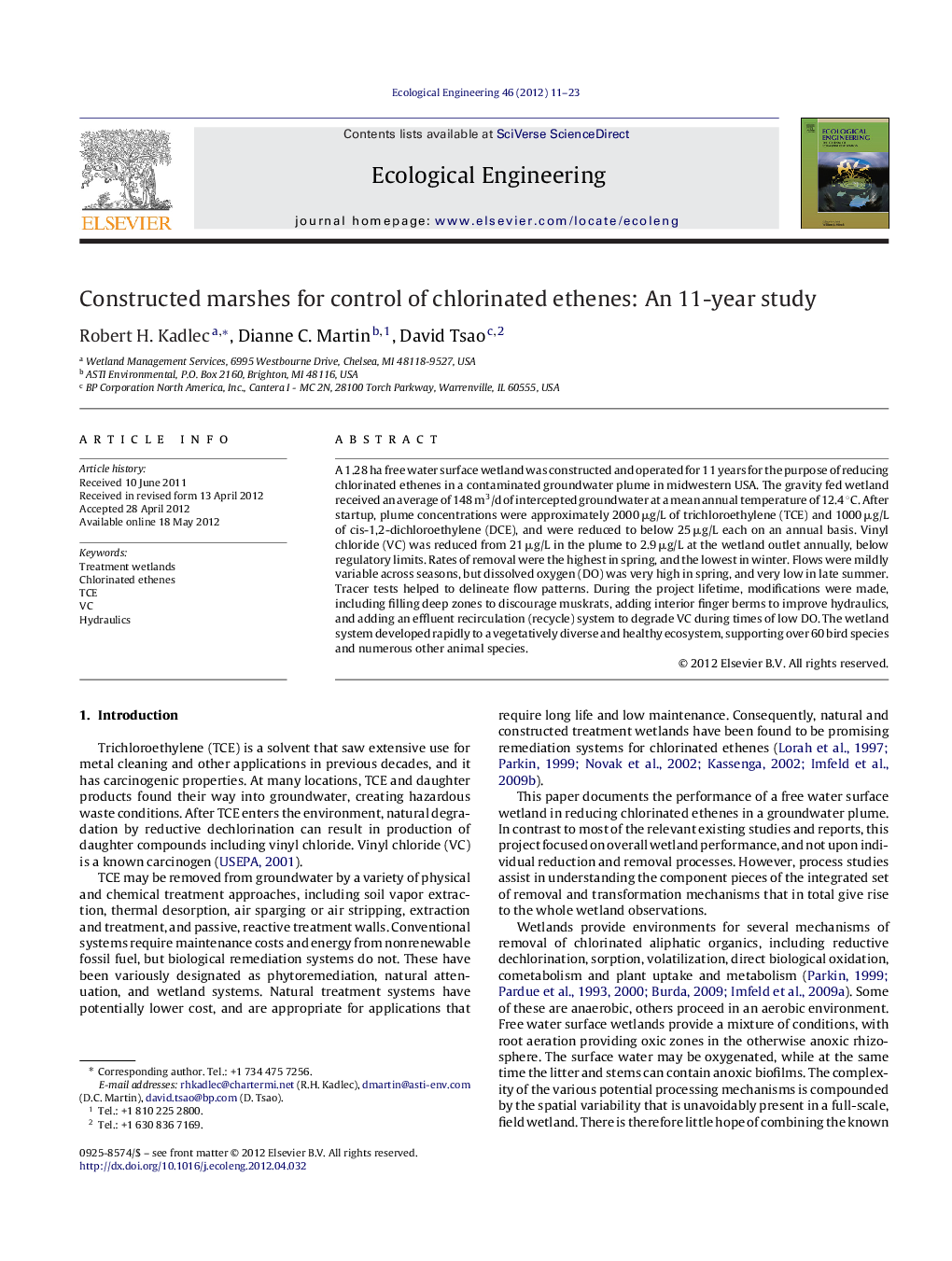| Article ID | Journal | Published Year | Pages | File Type |
|---|---|---|---|---|
| 4389975 | Ecological Engineering | 2012 | 13 Pages |
A 1.28 ha free water surface wetland was constructed and operated for 11 years for the purpose of reducing chlorinated ethenes in a contaminated groundwater plume in midwestern USA. The gravity fed wetland received an average of 148 m3/d of intercepted groundwater at a mean annual temperature of 12.4 °C. After startup, plume concentrations were approximately 2000 μg/L of trichloroethylene (TCE) and 1000 μg/L of cis-1,2-dichloroethylene (DCE), and were reduced to below 25 μg/L each on an annual basis. Vinyl chloride (VC) was reduced from 21 μg/L in the plume to 2.9 μg/L at the wetland outlet annually, below regulatory limits. Rates of removal were the highest in spring, and the lowest in winter. Flows were mildly variable across seasons, but dissolved oxygen (DO) was very high in spring, and very low in late summer. Tracer tests helped to delineate flow patterns. During the project lifetime, modifications were made, including filling deep zones to discourage muskrats, adding interior finger berms to improve hydraulics, and adding an effluent recirculation (recycle) system to degrade VC during times of low DO. The wetland system developed rapidly to a vegetatively diverse and healthy ecosystem, supporting over 60 bird species and numerous other animal species.
